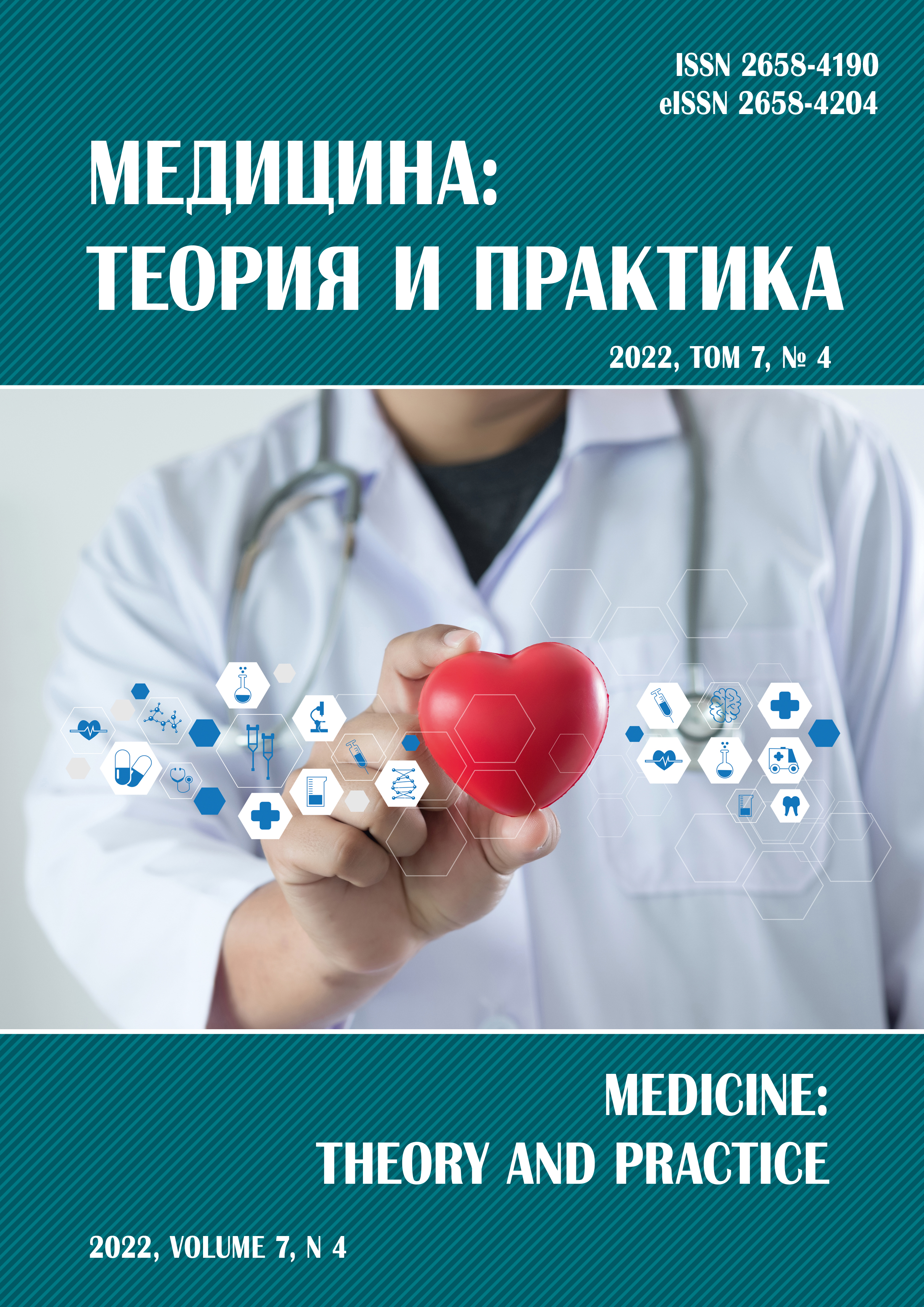BIOMARKER LEVEL OF ENDOTHELIAL DYSFUNCTION IN YOUTH 18-21 YEARS WITH ABDOMINAL OBESITY
Abstract
Background. Endothelial dysfunction, which develops in adolescence against the background of abdominal obesity, may be the cause of the accelerated development of cardiovascular diseases in adulthood. Aims: to study the level of biomarkers of endothelial dysfunction depending on the degree of abdominal obesity in young men aged 18-21 years. Materials and methods. 197 obese adolescent males were examined, which were divided into groups III - with abdominal obesity of 1st degree, 2nd degree and 3rd degree. The level of markers of endothelial dysfunction was studied: interleukin-6; P-selectin; circulating endothelial cells, highly sensitive C-reactive protein. Results. In the group of boys with grade 3 abdominal obesity, compared with the groups of boys with grade 2 and 1 obesity, a higher level of biological markers of endothelial dysfunction, including the level of interleukin-6 (5.3 ± 1.3 pg/ml; 4.7 ± 0, 9 pg/ml, 3.7 ± 0.8 pg/ml, F = 3.6, p < 0.05); highly sensitive C-reactive protein (13.7 ± 2.8 mg/l; 6.2 ± 1.9 mg/l; 4.4 ± 0.9 mg/l; F = 75.4; p < 0.001); the number of cells expressing P-selectin on the surface (20.3 ± 3.5 %, 17.1 ± 2.0 %, 11.8 ± 3.3 %; F = 22.3; p < 0.001) and the number of circulating endothelial cells (9.3 ± 2.8; 6.0 ± 0.5; 2.3 ± 0.5 per 300,000 leukocytes). Conclusions. As abdominal obesity progresses, there is a deterioration in endothelial function in young men. The data obtained indicate the activation of different pathways of the systemic inflammatory response and endothelial dysfunction in abdominal obese boys.



